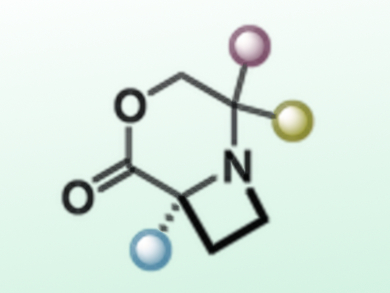Strained aliphatic N-heterocycles are important structural motifs in bioactive molecules and pharmaceuticals. Therefore, the development of efficient catalytic methods for the synthesis of cyclic amine products is an important challenge.
Matthew L. Gaunt and colleagues, University of Cambridge, UK, have developed a Pd(II)-catalyzed method for the γ-C(sp3)–H amination of cyclic free(NH) amines to azetidines (pictured). This approach uses the native coordinating ability of amines to direct the catalytic activation of inert C–H bonds. The combination of a silver salt and a hypervalent iodine oxidant, benziodoxole tosylate, is crucial for controlling the selective reductive elimination from the intermediate Pd(IV)-alkyl species to the desired heterocycle.
The method is tolerant of a range of functional groups, including structural features derived from chiral α-amino alcohols, and leads to the diastereoselective synthesis of enantiopure azetidines. Further useful compounds can be accessed by reduction, aminolysis, hydrolysis, or oxidative decarboxylation of azetidines. The team believes this activation pathway will stimulate discovery of other catalytic C–H functionalization processes.
- Selective Reductive Elimination at Alkyl Palladium(IV) by Dissociative Ligand Ionization: Catalytic C(sp3)–H Amination to Azetidines,
Manuel Nappi, Chuan He, William G. Whitehurst, Ben G. N. Chappell, Matthew J. Gaunt,
Angew. Chem. Int. Ed. 2018.
https://doi.org/10.1002/anie.201800519




